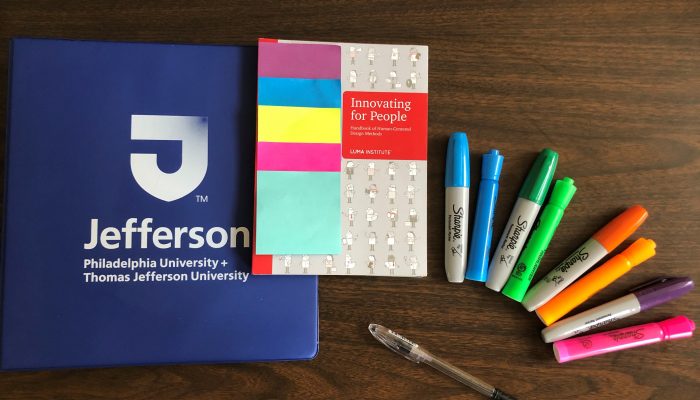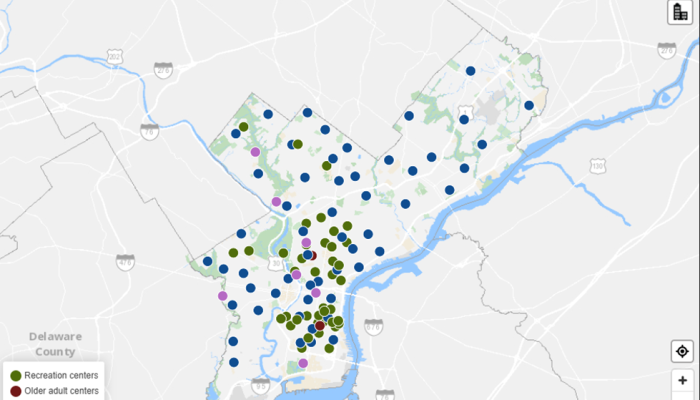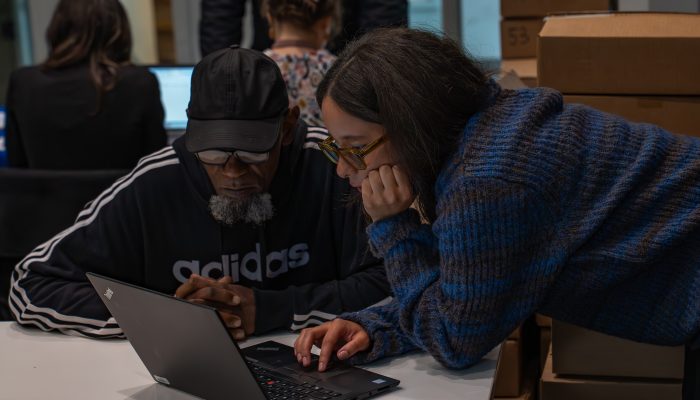Week 5: Writing Your Problem Statement
The fifth cohort of the Academy for Municipal Innovation kicked off in October 2017. This is a blog series written by participants about their experiences in the program. Today’s author is Lauren Holland, Digital Marketing & Digital Communications Manager for the Department of Commerce.
Government has the reputation of being slow to change or improve current standards, so I was personally very excited to apply for the Innovation Academy. Its existence alone speaks to our City government’s commitment to improving dated processes by exploring innovative alternatives. Part of the academy application process involves writing a problem statement. It doesn’t seem at the time to be as important as it will prove to be – it literally is the backbone of your studies, and the sounding board against which you will test all of the new methods learned in class. So – here are my key things to keep in mind when writing this very important Problem Statement!
#1 – Make it something you can actually affect change in.
When I first began thinking of what my problem statement would be, I thought of things I wanted to see change in City government. “There are people submitting applications through the actual US Postal Service!”, I thought with indignation, “Give the people what they want – easier ways to interface with and submit information to the government via electronic means!”. I based my entire problem statement on this concept, or rather by the time I was finished ranting, my Problem Statement Paragraphs.
It’s a noble cause (said of course, without bias!), but now, halfway through the Academy, the professors + new methods have torn my intricately stated statement to shreds! I quickly realized that I’m one City employee, employed by one City department. I don’t have the ability, connections, or reach to be able to single-handedly change how all of the different City applications would be received and processed.
Save yourself this particular headache, and identify a problem that you yourself can actually impact change in. If it’s over your head or outside your pay grade, reconsider the issue you’re addressing.
#2 – Simplify, then simplify again.
Remember back in #1, where I️ referred to my statement as Problem Statement Paragraphs? Don’t make that mistake. If your statement involves commas, it’s probably too long! Your goal should be to very clearly state an issue that you have identified through your work with the City, and it should be one sentence.
#3 – Get Creative!
This is your opportunity to tackle an issue that may have been a thorn in your side for your entire City career! Over the course of the academy, you’ll be taught how to break down your statement into its most basic elements, in order to approach it from angles you never before considered. With that knowledge, pick a topic that you care about, and that you’d really like to make headway in solving. You’ll also be working with this issue once a week for 2 months, so choose something that will keep your interest!
#4 – Don’t overthink it
Throughout the academy classes, you’ll learn how to edit and refine your problem statement, so don’t overthink how to perfect it during the application phase. Keeping the above tips will help you a bit, but part of the fun and novelty of the class is re-working your statement into something viable – so don’t stress about perfection just yet!
What is the Academy for Municipal Innovation?
AMI is a seven-week program that introduces participants to the principles and practice of innovation. Participants will learn to integrate tools and techniques of innovation drawn from design thinking, system thinking, business analytics, and ethnographic research to discover innovative solutions to complex real world problems. The program will be delivered in a studio setting, anchored in Jefferson University’s (formerly Philadelphia University) signature nexus learning pedagogy of active, collaborative, and real world learning. Each session will introduce practical techniques & tools that can be immediately applied at work to inspire innovation through collaboration.
Throughout the program, the City (Innovation Management) will offer opportunities to further develop the skills and tools that participants are learning in the classroom. Brown bag lunches, innovation consulting sessions and workshops will take place throughout the fall to encourage students to engage with the material in the context of their everyday portfolios, and to provide them with a space to meet past graduates and learn about how they’ve integrated innovative thinking into their roles.




